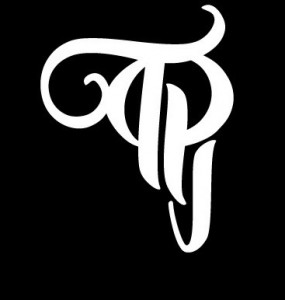
For part one of this series on naming the “New Calvinism,” click here. Click here for part two.
The Unintended Disembedding at the Synod of Dort
All this semantic wrestling does, however, bring up another question—one that I think we might profitably explore further: How did Reformed soteriology reach beyond the historic Reformed churches in the first place? To put it another way, how did perspectives on salvation that were once inextricably embedded in paedobaptist contexts—in churches that mark infants as participants in the covenant by means of baptism—end up expanding to other sects, including Baptists and even charismatics?
I suggest that this expansion of Reformed soteriology was an unintended result of the five points that were formulated at the synod of Dort. The separation of Reformed soteriology from the more comprehensive confessions and catechisms of the Reformed churches at Dort allowed this soteriology to become, in some sense, transportable into other contexts. If my assessment is correct, one might say that—since the canons of Dort were responses to five previous declarations from the Arminian Remonstrants—the Arminians were the ones who shaped the circumstances that made the spread of Reformed soteriology possible!
Of course, the Reformed pastors at the synod of Dort never intended their summary of Reformed soteriology to stand alone. The five points in the canons of Dort were designed to serve as a soteriological clarification, standing as one of the Three Forms of Unity alongside the Belgic Confession and Heidelberg Catechism. That’s why one scholar has declared, “It would be a major error–both historically and doctrinally–if the five points of Calvinism were understood as the sole or even the absolutely primary basis for identifying someone as holding Calvinistic or Reformed faith.” Seen solely from the perspective of the original expression and intent of these five points, this declaration is undoubtedly correct. What I am contending, however, is that—in the decades that followed the synod of Dort—the five points from Dort took on a life of their own, independent of their original confessional context and intent. The canons of Dort provided a summation of one aspect of Reformed theology—the soteriological aspect—that was no longer inextricably entwined with the more comprehensive Reformed confessions and catechisms. Extricated from its original context, Reformed soteriology was transported into other contexts—credobaptist churches, for example—where neither the Belgic Confession nor the Heidelberg Catechism could have been embraced in their entirety. The disembedding of Reformed soteriology in the synod of Dort’s response to the Arminian Remonstrants contributed to the long-term resilience and expansion of the Reformed doctrines of grace by making these doctrines transferable beyond their original context.
The process that I’ve traced here also explains why there are so many Reformed Baptists but few, if any, Lutheran Baptists. The canons of Dort opened the door for a separation of Reformed soteriology from Reformed churches. Lutheran soteriology, however, remained embedded in the confessions, catechisms, and ecclesiological structures of Lutheran churches.
How then should we refer to the recent resurgence of interest in Reformed soteriology?
Before providing a tentative answer to this question, it may be worth pointing out that no one within this growing movement appears to be clamoring for a newer or narrower name. What I’ve witnessed among the so-called “young, restless, Reformed” is widespread contentment with historical designations and denominations. The discontent with existing epithets seems to spring from those that are critical of the Reformed resurgence not from those within the movement.
That said, it seems to me that the most accurate descriptor would be “Dortianism” or, if some prefix must be affixed to denote the distinct contours of the current movement, “neo-Dortianism” (see chart below for this taxonomy). Unfortunately, I don’t expect “Dortianism” to blossom into anyone’s preferred terminology anytime soon.* The events at Dort are too obscure and the term itself sounds too distasteful to end up emblazoned on anyone’s book cover. (Do you really think that Young, Restless, Dortian would have attracted anywhere near the number of readers that Young, Restless, Reformed did?) And so, of the options that are intelligible beyond a handful of theologians and church historians, “neo-Reformed”—though not without its difficulties—probably remains the least problematic nomenclature in an ever-multiplying pool of possibilities. And perhaps part of what the less-than-ideal “neo-” prefix could connote is the spread of Reformed soteriology not only within but also beyond the historic Presbyterian and Reformed churches.
The neo-Reformed movement is best seen, then, as one minuscule current in a much broader stream that may be traced back into church history through an early seventeenth-century gathering of pastors in the Dutch city of Dort. Seeing the most recent Reformed resurgence in this way turns our attention away from the latest parachurch conferences and star preachers and toward a far more vast and variegated history filled with events none of us could have planned and progenitors we would never have chosen. Recalling this crazy history in which the Remonstrants shaped the Reformed and “Calvinism” somehow leaped from caconym to compliment keeps us from slipping into smug self-satisfaction with passing successes. It calls us to remember that we are nothing more than a few grains of sand in a majestic divine plan that’s far greater than any of us but that somehow by grace includes us. It calls us to bow in worship as we remember anew that we serve a God who is inscribing on everyone who rests in him—not only the Reformed but the partly Reformed, the non-Reformed, and a multi-hued multitude that’s never heard of the Reformation—the only name that ultimately matters: his own name and the name of his crucified Son (Revelation 22:4). “What do you have that you didn’t receive as a gift? And if everything you have was given to you, why brag as if it wasn’t a gift?” (1 Corinthians 4:7).
To read the rest of this article, click here.

